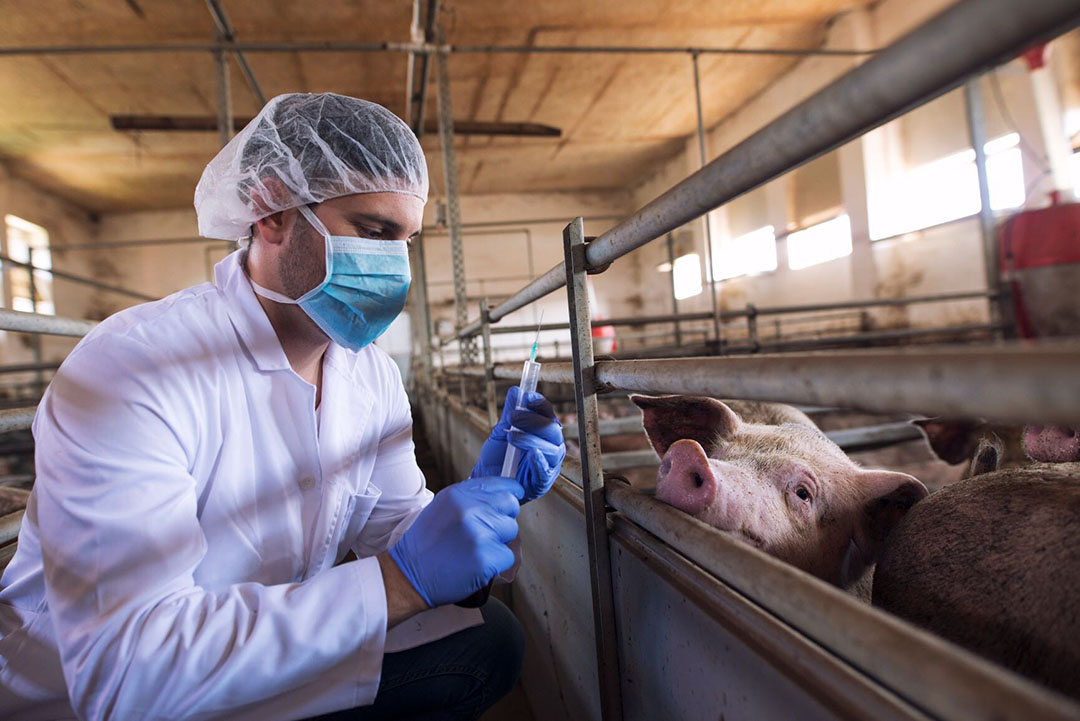EU: Sales of veterinary antibiotics dropping

A report published by the European Medicines Agency shows a significant decline in the sale of veterinary antibiotics across Europe.
The report goes to show that overall sales dropped by more than 34% between 2011 and 2018. The 10th annual report on the European Surveillance of Veterinary Antimicrobial Consumption has been compiled using data submitted from 31 European countries (30 EU/EEA countries and Switzerland) to the European Medicines Agency for 2018.
In the EU, the use of antimicrobials for growth promotion has been banned since 2006, therefore the data provided represent exclusively sales of antimicrobial agents sold as veterinary medicinal products, and the data covers all food-producing species, including horses, which are considered to be food-producing species according to EU legislation.
“The steady decrease in sales of veterinary antibiotics over 10 years shows that Europe is on the right track to fight antimicrobial resistance,” said Ivo Claassen, head of EMA’s Veterinary Medicines Division. “EU guidance and national campaigns promoting prudent use of antibiotics in animals are having a positive effect.”
Tentative explanations provided by some countries for the decline in sales include the implementation of responsible-use campaigns, restrictions on use, prescription control measures, increased awareness of the threat of antimicrobial resistance, setting targets for reductions in antimicrobial sales or use, and changes in animal demographics.
Tetracyclines and penicillins most significant
A large difference in the sales for 2018, expressed as mg/PCU*, was observed between the countries with highest and lowest sales (range 2.9 to 466.3 mg/PCU). Of the overall sales of antimicrobials in the 31 countries in 2018, the most significant were tetracyclines (30.7%), penicillins (28.8%) and sulphonamides (8.4%), overall, accounting for 67.9% of total sales in the 31 countries (Figure 1).
Figure 1

Click here to enlarge this figure
The prescribing patterns of the various antimicrobial classes varied substantially. Differences between countries can be partly explained by differences in animal demographics, the selection of antimicrobial agents, dosage regimes, the type of data sources and veterinarians’ prescribing habits.
In 2018, notable variations in the proportion of antimicrobial classes included in the EMA AMEG Category B were observed between countries, i.e. 3rd– and 4th-generation cephalosporins, fluoroquinolones, other quinolones and polymyxins – with sales ranging from <0.01 to 0.9 mg pcu, 0 to 2.5 mg pcu and 0 to 12.8 mg pcu, respectively. for these classes, sales for food-producing animals in the 31 countries accounted for 0.2%, 2.5%, 0.3% and 3.3% of total sales, respectively. in addition to the antimicrobial classes belonging to ameg category b, who has classified macrolides as critically important antimicrobials with the highest priority for human medicine. macrolides accounted for 7.7% of the total sales of antimicrobials for food-producing animals.>
Individual vs group treatment
The proportions accounted for by premixes and oral powders vary considerably between the countries, which may be attributed to whether or not the farmers in the country administer medicated feed prepared by a feed mill from premixes, or whether group treatment is carried out by the application of oral powder as, for example, top dressing on the feed at the farm. It may also be influenced by the distribution of animal species, as group medication is used mainly in poultry and pigs, and less, for example, in sheep or goats. The products available as well as national policies for in-feed medication can also influence the sales patterns in terms of pharmaceutical form.
When aggregated for 31 countries, sales of pharmaceutical forms intended for treatment of individual animals (12.3% of total sales across all countries), 11.4% of the sales were accounted for by injectable preparations, 0.6% by intramammary preparations and 0.3% by oral pastes, boluses and intrauterine preparations. Sales of pharmaceutical forms suitable for group treatment accounted for 87.7% of the total sales: premixes accounted for 26.9%; oral powders for 9%; and oral solutions for 51.8% (Figure 2). The proportion accounted for by pharmaceutical forms applicable to group treatment varied substantially between countries, ranging from 2.3% to 95% (Figure 3).
Figure 2

Click here to enlarge this figure.
Figure 3

Click here to enlarge this figure.
In 2018, the proportion of the total sales of antimicrobial veterinary medicinal products suitable for group treatment (oral powder, oral solution and premix) that contained 1 active ingredient was 87.5%, whereas 12.5% contained 2 or more active ingredients.
An overall decline of almost 35%
For the 25 countries that reported sales data for all years between 2011 and 2018, an overall decline in sales (mg/PCU) of 34.6% was observed. Overall sales fell from 161.4 mg/PCU in 2011 to 105.6 mg/PCU in 2018 in these countries (Figure 4).
Figure 4

Click here to enlarge this figure.
A fall in sales (mg/PCU) of more than 5% was observed in 18 of these 25 countries (ranging from -6.2% to -58.2%), whilst there was an increase of more than 5% in 5 countries during the reference period (ranging from 13% to 32.7%). Among these 25 countries, a noticeable decrease in sales (mg/PCU) was identified for some of the highest-selling countries, which has had a significant impact on overall sales and resulted in the 34.6% reduction observed during this period.
The total sales of the AMEG Category B antimicrobials in these 25 countries showed a decreasing trend, which contributed to the overall decrease. Specifically, between 2011 and 2018, sales of 3rd- and 4th-generation cephalosporins decreased by 24.4%, polymyxins decreased by 69.8%, fluoroquinolones decreased by 4.2% and sales of other quinolones decreased by 74.4%.
Variations between the 31 countries in reported sales (mg/PCU) and in sales patterns are likely to be partly due to differences in the occurrence of bacterial diseases, in the composition of the animal population and in the production systems. Furthermore, there are considerable variations in terms of the daily doses used for the various antimicrobial agents and pharmaceutical forms, as well as in duration of treatment. Other factors also need to be considered, including a change in national data-collection systems or under-reporting.
Figure 5












